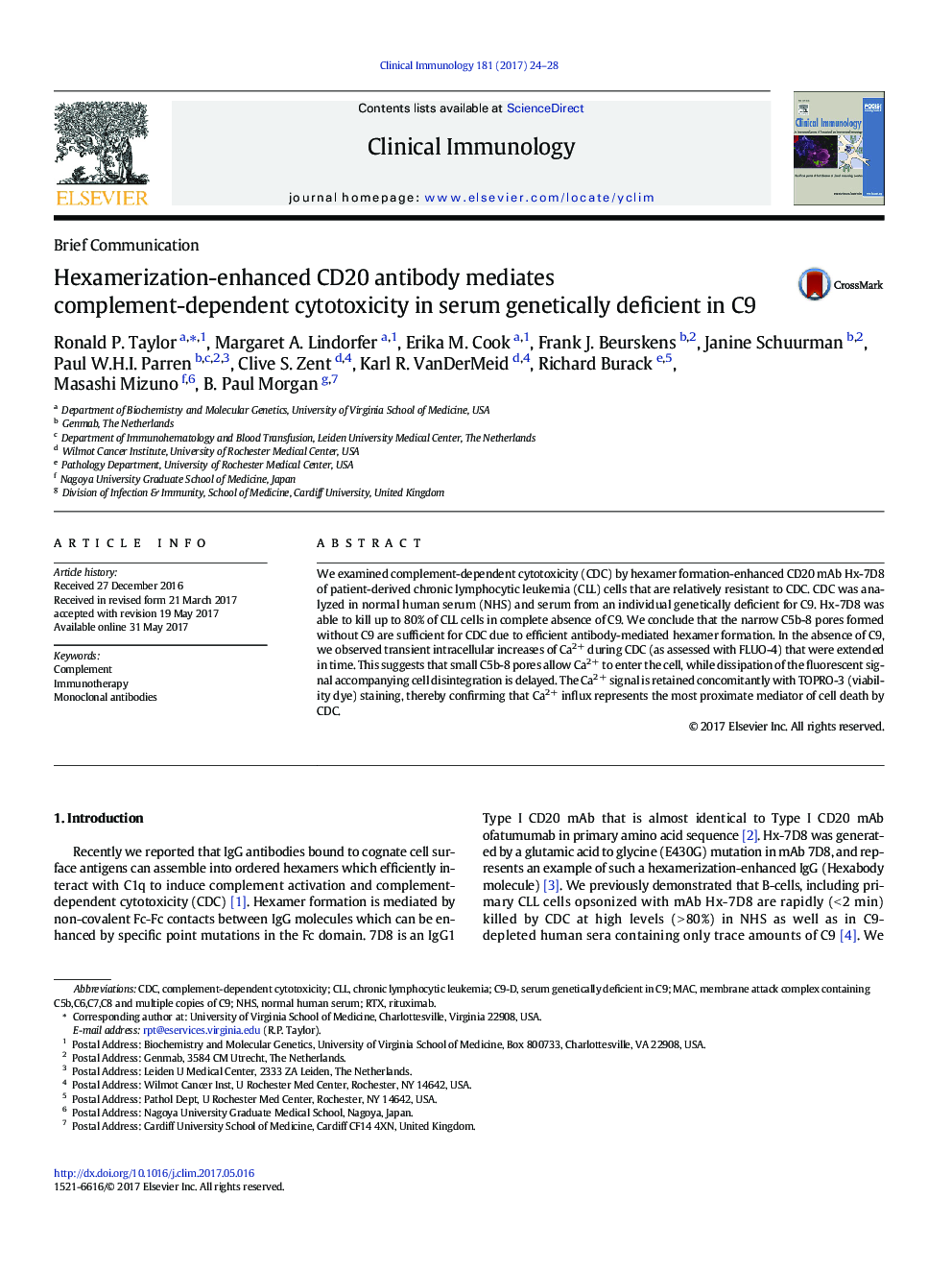| Article ID | Journal | Published Year | Pages | File Type |
|---|---|---|---|---|
| 5654821 | Clinical Immunology | 2017 | 5 Pages |
â¢Hexamer-formation enhanced CD20 mAbs kill CLL cells by CDC in serum genetically deficient in C9â¢Complement activated to the C5b-8 stage is adequate to allow influx of lethal amounts of Ca2 + in CLL cells.â¢The transition state intermediate (high FLUO-4 signal intensity) has a longer lifetime in cells killed by C5b-8.
We examined complement-dependent cytotoxicity (CDC) by hexamer formation-enhanced CD20 mAb Hx-7D8 of patient-derived chronic lymphocytic leukemia (CLL) cells that are relatively resistant to CDC. CDC was analyzed in normal human serum (NHS) and serum from an individual genetically deficient for C9. Hx-7D8 was able to kill up to 80% of CLL cells in complete absence of C9. We conclude that the narrow C5b-8 pores formed without C9 are sufficient for CDC due to efficient antibody-mediated hexamer formation. In the absence of C9, we observed transient intracellular increases of Ca2Â + during CDC (as assessed with FLUO-4) that were extended in time. This suggests that small C5b-8 pores allow Ca2Â + to enter the cell, while dissipation of the fluorescent signal accompanying cell disintegration is delayed. The Ca2Â + signal is retained concomitantly with TOPRO-3 (viability dye) staining, thereby confirming that Ca2Â + influx represents the most proximate mediator of cell death by CDC.
